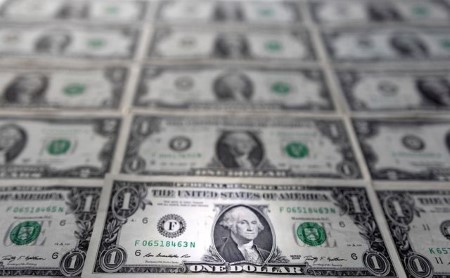




Monthly Economic Update: One for the road
 DOWNLOAD
DOWNLOAD

Inflation Update: Still low, still slow
 DOWNLOAD
DOWNLOAD

Philippines Trade Update: Exports momentum continues
 DOWNLOAD
DOWNLOAD


US recap: EUR/USD hit third highest 2023 peak as Fed pricing adjusted

March 23 (Reuters) – The dollar index was modestly lower in late trade on Thursday after recovering from earlier post-Fed losses that had pushed EUR/USD to its 1.0930 high on EBS near this year’s 1.1034 peak.
The Fed’s dovish 25bp rate hike Wednesday in contrast to the ECB’s bolder 50bp increase on March 16, amid banking sector stress spurred on by US failures, sent 2-year bund-Treasury yield spreads to their highest in over a year before a 9bp pullback on Thursday tugged EUR/USD well off its highs.
Wednesday’s Fed hike was overshadowed by concerns that banks would tighten credit to safeguard liquidity and reduce risk.
That could amplify the impact of aggressive tightening delivered over the last year, the true economic impact of which may yet to be realized.
The market now prices at most one more 25bp Fed hike in May before steady cuts into 2024. The spreads between the current Fed funds rate and 2-year Treasury yields surged above 1%, the level that forced the Fed to begin reversing rate hiking cycles during the global financial crisis and dot-com collapses.
Sterling rose 0.2%, unable to make a new high following the BoE’s dovish 25bp rate hike, as 2-year gilts-Treasury yield spreads fell 12bp and European bank stocks fell faster than US banks.
The bigger issue for sterling is the sense the BoE is averse to much more than another 25bp hike, despite UK inflation remaining at double-digit levels as US inflation has retreated from 9.1% last June to 6% in February.
USD/JPY fell 0.64% as 2-year Treasury-JGB yields spreads dove and the haven yen attracted broader bids with risk-off flows rebounding. Prices were caught by this year’s uptrend off January and February lows, but daily and weekly charts point to this year’s lows being at risk.
(Editing by Burton Frierson; Randolph Donney is a Reuters market analyst. The views expressed are his own.)
This article originally appeared on reuters.com





 By Reuters
By Reuters